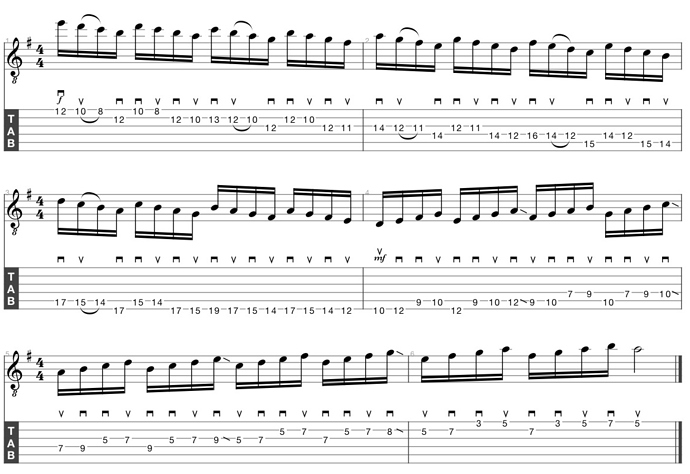The punisher involves all the possible directions for pickslanting. Assuming you’re a USX player (I still struggle with this new terminology) starting with a downstroke, the first four notes on the thickest E string just require the same USX motion, but after the 5th note, which is the first note on the A string, a change in pickslant is then required to come back to the E string for the 6th note, then you play 3 notes on the 6th string, which is an odd number, so again the pickslant flips (back to the original USX direction, although in practice I flip immediately back), then you play another 2 notes on the A string (and even number, so no need for a change in slant), then back to the E string for another 2 notes (again, no change), then 3 notes on the A string (odd number, so a change), then 1 on the E string so again flips slant, then the final 4 notes are back to USX.
Then the whole pattern repeats on the A and D strings and then the next two.
Hard to explain. Much easier to watch the video or just do it. With time it becomes automatic and I’ve found the skill extends to other patterns so I don’t really need to think about it now.






